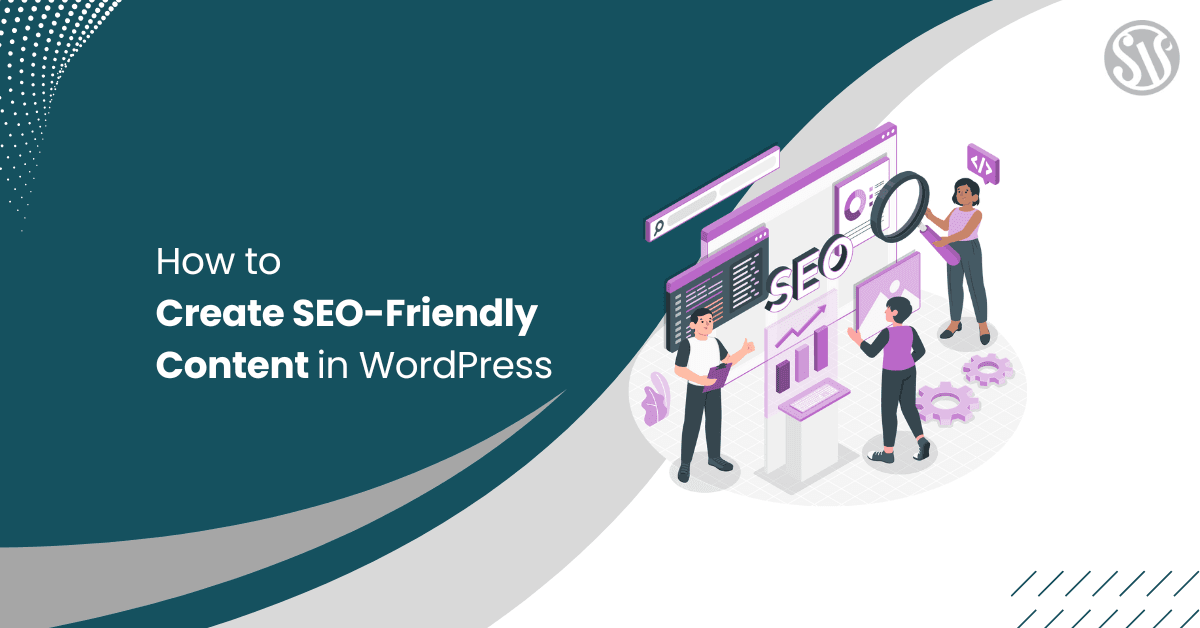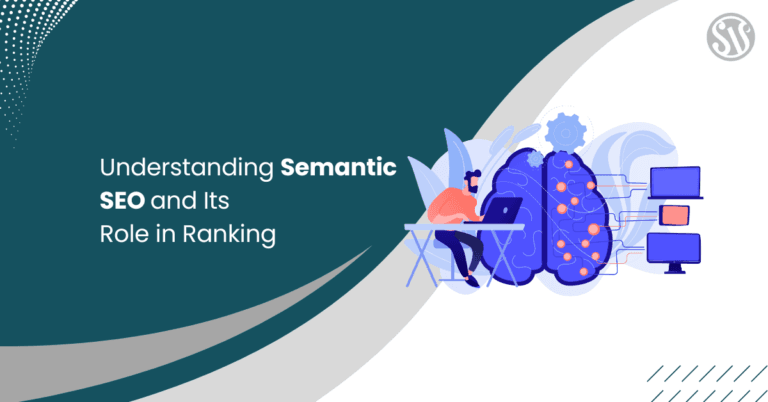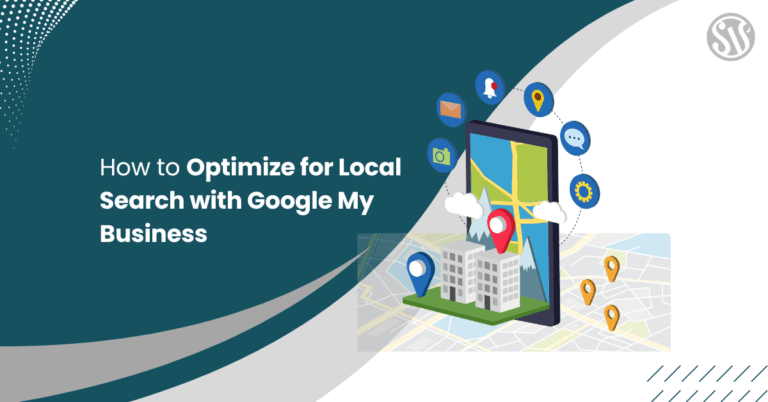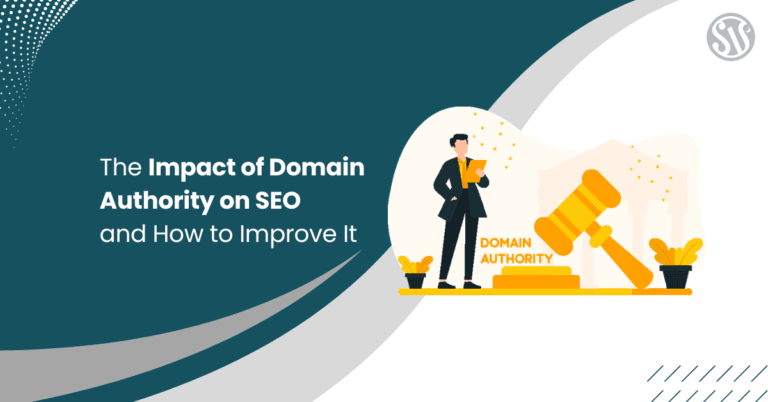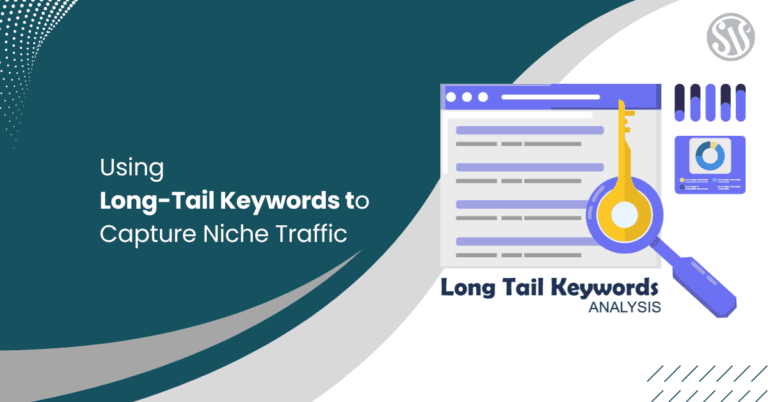How to Create SEO-Friendly Content in WordPress
Creating content that engages your audience and ranks well on search engines is crucial for online success. WordPress is one of the most popular content management systems, offering flexibility and a wide range of plugins and themes to help you optimize your site.
In this post, we’ll walk you through the process of creating SEO-friendly content in WordPress, from understanding the basics of SEO to advanced on-page strategies. By the end, you’ll have a clear roadmap to improve your website’s search engine ranking and drive more organic traffic.
Introduction to SEO and WordPress
SEO is the art and science of increasing your website’s visibility on search engines like Google. Ensuring your site stands out among all the blogs is essential for success. WordPress, powering over 40% of all websites, offers an ideal platform for beginners and experienced marketers to create, optimize, and maintain content that ranks well.
SEO-friendly content is more than just using the right keywords; it involves creating high-quality, engaging material that addresses your audience’s needs. This guide will help you navigate the ins and outs of creating content that meets user and search engine expectations.
Understanding SEO Basics
Before diving into the specifics of WordPress, it’s essential to understand some fundamental SEO concepts:
What is SEO?
SEO involves optimizing your website’s content, structure, and technical settings so search engines can better understand and rank your pages. The ultimate goal is to drive organic (non-paid) traffic by appearing higher in search engine results pages (SERPs).
Key Components of SEO
- On-page SEO: On-page SEO focuses on a page’s content and HTML source code. It includes keyword optimization, meta tags, headings, internal linking, and more.
- Off-page SEO: Off-page SEO covers external factors such as backlinks, social signals, and influencer marketing that help improve your site’s authority.
- Technical SEO: This includes website speed, mobile-friendliness, XML sitemaps, and structured data to ensure your site is accessible and crawlable by search engines.
The Importance of Quality Content
Quality content is the backbone of any SEO strategy. Search engines prioritize user experience, which means content must be valuable, engaging, and relevant. This involves answering the searcher’s query in an easy-to-read and well-organized manner.
Setting Up Your WordPress Site for SEO Success
Before you even begin writing your content, ensuring that your WordPress website is optimized from a technical standpoint is essential. Here’s how to start:
1. Choose a Reliable Hosting Provider
A fast and reliable hosting provider is critical for user experience and SEO. Slow loading times can hurt your rankings, so invest in a reputable host known for speed and uptime.
2. Select an SEO-Friendly Theme
Choose a WordPress theme that is optimized for speed and mobile responsiveness. Lightweight themes without excessive code bloat can significantly improve page loading times, a crucial ranking factor.
3. Install Essential SEO Plugins
Several plugins can simplify your SEO efforts:
- Yoast SEO or Rank Math: These plugins guide you through on-page optimization by analyzing your content and providing actionable recommendations.
- WP Rocket or W3 Total Cache: These caching plugins improve site speed by reducing load times.
- Smush or ShortPixel: Image optimization plugins that compress images without sacrificing quality, ensuring faster page loads.
4. Configure Permalinks
Configuring your permalink structure can help you set up clean and descriptive URLs.
Navigate to Settings > Permalinks in your WordPress dashboard.
Then, choose a structure that includes the post name (e.g. https://yourwebsite.com/seo-friendly-content/).
5. Set Up Google Analytics and Search Console
Integrate Google Analytics to monitor your website traffic and user behavior. Similarly, verify your site in Google Search Console to keep track of indexing issues, keyword performance, and search visibility.
Keyword Research: The Foundation of SEO-Friendly Content
Keyword research is the first step in creating content that ranks. It helps you understand what your audience is searching for and how you can tailor your content to meet their needs.
1. Identify Your Niche
Start by defining your niche and target audience. What topics interest them? Which problems are they trying to solve? Understanding your audience’s needs will guide your keyword strategy.
2. Use Keyword Research Tools
Several tools can help you identify relevant keywords:
- Google Keyword Planner: A free tool that provides search volume, competition data, and keyword ideas.
- Ahrefs and SEMrush: These platforms offer in-depth keyword analysis, competitive insights, and backlink data.
- Ubersuggest: A beginner-friendly tool that provides keyword suggestions and SEO difficulty ratings.
3. Focus on Long-Tail Keywords
Long-tail keywords are longer, more specific phrases that target niche audiences. They often have a lower search volume but less competition, making it easier to rank for them. For example, how to create SEO-friendly content in WordPress is a long-tail keyword phrase that precisely matches user intent.
4. Analyze Competitor Keywords
Look at what keywords your competitors are ranking for. Tools like Ahrefs allow you to analyze competitor content and identify gaps where you can provide more value or a fresh perspective.
5. Organize Your Keyword List
Once you list keywords, group them by topic or theme. This organization will help you structure your content and create comprehensive articles that cover various aspects of your topic.
Crafting Your Content: Writing with SEO in Mind
Now that your research is done, it’s time to write. Creating engaging, SEO-friendly content involves several key practices:
1. Write for Your Audience First
Quality content starts with understanding your audience. Write in a conversational tone that resonates with them. Ensure your content is informative, answers common questions, and provides actionable insights.
2. Use a Clear Structure
Organize your content using headings (H1, H2, H3, etc.). A clear structure helps readers navigate your content and allows search engines to understand the information hierarchy on your page better.
3. Optimize Your Headline
Your headline is the first thing users and search engines see. Make it compelling, keyword-rich, and reflective of the content. For example, How to Create SEO-Friendly Content in WordPress: A Step-by-Step Guide is descriptive and engaging.
4. Create an Engaging Introduction
Your introduction should hook the reader by addressing their pain points or questions. Clearly state what the article will cover and why it’s valuable. Use a mix of statistics, questions, or anecdotes to draw the reader in.
5. Write Detailed, In-Depth Content
Long-form content performs better in search engines because it provides comprehensive information. Aim for depth by covering multiple angles of your topic. Break down complex ideas into digestible sections and use bullet points or numbered lists where appropriate.
6. Incorporate Keywords Naturally
While keywords are important, avoid overstuffing your content. Integrate your primary and secondary keywords within the text, headings, and meta tags. Focus on readability and ensuring that the content flows logically.
7. Use Internal and External Links
Linking to other relevant posts on your website (internal linking) can keep users engaged and help search engines understand the structure of your site. Additionally, link to high-quality external resources to provide further reading and add credibility to your content.
8. Optimize for Readability
Make your content easy to scan by:
- Using short paragraphs: Keep them to 2-4 sentences.
- Inserting subheadings: These help break up text and guide the reader.
- Including images and multimedia: Visual content can help illustrate your points and increase engagement.
9. Add Multimedia Elements
Images, infographics, videos, and other multimedia elements can enhance your content and improve SEO. Optimize images by using descriptive filenames and alt tags that include relevant keywords. Videos can also keep users on your page longer, boosting SEO rankings.
Optimizing On-Page Elements
After drafting your content, it’s time to optimize the on-page elements to ensure search engines can easily understand and rank your page.
1. Title Tags and Meta Descriptions
Your title tag is one of the most essential SEO elements. It should be concise (50-60 characters), include your primary keyword, and entice users to click. The meta description should summarize the content (up to 160 characters) and include a call to action. Though meta descriptions aren’t a direct ranking factor, they influence click-through rates (CTR).
2. Header Tags
Use header tags (H1, H2, H3) to structure your content. Your H1 tag should contain your primary keyword and summarize the article’s main topic. H2 and H3 tags help break down sections and subtopics, making your content easier for users and search engines to scan.
3. Image Optimization
Every image on your page should be optimized:
- File Name: Use descriptive file names with keywords (e.g., seo-friendly-wordpress-guide.jpg).
- Alt Text: Provide clear, keyword-rich alt text to describe the image.
- File Size: Compress images to reduce loading times without compromising quality.
4. URL Structure
A clean URL structure improves both user experience and SEO. Keep URLs short, descriptive, and keyword-rich. For example, https://yourwebsite.com/seo-friendly-content-wordpress is clear and straightforward.
5. Mobile-Friendliness
With mobile-first indexing, ensuring that your content is mobile-friendly is essential. Use responsive design techniques and test your website using Google’s Mobile-Friendly Test tool to ensure a smooth experience across devices.
6. Schema Markup
Schema markup (structured data) helps search engines better understand your content and can enhance search result listings with rich snippets. Tools like Google’s Structured Data Markup Helper can guide you through adding schema to your posts.
7. Page Speed
Site speed is a significant ranking factor. Use tools like Google PageSpeed Insights to identify areas for improvement.
Common fixes include:
- Caching: Use caching plugins.
- Image Compression: Optimize images for faster load times.
- Minification: Minify CSS, JavaScript, and HTML files to reduce their size.
Leveraging SEO Plugins and Tools
WordPress offers a robust ecosystem of plugins and tools that can simplify the process of optimizing your content.
1. Yoast SEO
Yoast SEO is one of the most popular WordPress SEO plugins. It offers:
- Real-Time Content Analysis: Recommends keyword usage, readability, and meta tags.
- Snippet Preview: This lets you see how your page will appear in search results.
- XML Sitemaps: Automatically generates sitemaps to help search engines crawl your site.
2. Rank Math
Another powerful plugin, Rank Math, offers similar features to Yoast SEO with an intuitive interface and detailed insights:
- Keyword Optimization: Helps you optimize for multiple keywords per post.
- SEO Audits: Offers suggestions to fix common SEO issues.
- Rich Snippets Support: Improves your search result appearance with enhanced snippets.
3. Google Analytics Dashboard for WP
Google Site Kit integrates Google Analytics directly into your WordPress dashboard, providing real-time insights into user behavior, traffic sources, and page performance.
4. WP Rocket
WP Rocket is a premium speed optimization caching plugin that dramatically improves your site’s loading times. It handles caching, file minification, and other performance enhancements with minimal configuration.
5. Smush and ShortPixel
Both plugins are excellent for optimizing images, ensuring your multimedia content doesn’t slow down your page.
Content Promotion and Link Building
Creating SEO-friendly content is only part of the equation. Promoting your content and building links are equally important for achieving higher rankings.
1. Social Media Promotion
Promote your blog posts on social media platforms like Facebook, Twitter, LinkedIn, and Instagram. Engaging in social media posts can drive traffic and earn shares and backlinks.
2. Guest Blogging
Writing guest posts for reputable websites in your niche is an effective way to build authority and gain backlinks. Ensure that your guest posts include a link to your website, preferably to a related piece of content.
3. Internal Linking Strategy
Linking between related posts on your website helps with SEO and improves user experience by guiding readers to additional valuable content. Aim to include relevant internal links naturally throughout your content.
4. Outreach and Relationship Building
Reach out to influencers and other bloggers in your niche to share your content. Building relationships can lead to natural backlink opportunities and increase your content’s reach.
5. Monitor Your Backlink Profile
Use Ahrefs, Moz, or SEMrush to monitor your backlink profile. Identify and disavow any low-quality or spammy backlinks if necessary, ensuring your site maintains a strong link profile.
Measuring and Improving SEO Performance
To ensure your SEO efforts pay off, measuring performance and continuously improving your strategy is essential.
1. Set Up Key Performance Indicators (KPIs)
Track metrics that matter to your site’s growth:
- Organic Traffic: The number of visitors coming from search engines.
- Bounce Rate: The percentage of visitors who leave after viewing only one page.
- Conversion Rate: The percentage of visitors who complete a desired action (e.g., signing up for a newsletter).
- Keyword Rankings: Monitor your target keywords’ positions in SERPs.
2. Use Analytics Tools
Google Analytics is indispensable for tracking your website’s performance. In addition, Google Search Console provides insights into indexing, crawl errors, and keyword performance. Combining data from both tools offers a complete picture of your SEO progress.
3. Conduct Regular SEO Audits
Perform periodic audits to identify and fix issues such as broken links, duplicate content, or technical errors hindering your performance. Tools like Screaming Frog SEO Spider can help automate this process.
4. Update and Repurpose Content
SEO is an ongoing process. Revisit older posts to update information, improve readability, and optimize keywords as search trends change. Repurposing content into different formats (e.g., infographics, videos, podcasts) can also attract new audiences and extend the lifespan of your content.
5. A/B Testing and Experimentation
Test headlines, meta descriptions, and content structures to see what resonates best with your audience. Tools like Google Optimize can help you run experiments and optimize for user engagement and conversions.
Advanced Tips for Creating SEO-Friendly Content
Once you’ve mastered the basics, consider these advanced strategies to take your SEO-friendly content to the next level:
Leverage Latent Semantic Indexing (LSI) Keywords
LSI keywords are semantically related to your primary keyword. Incorporating them naturally throughout your content helps search engines better understand the context and improves your chances of ranking for related queries.
Write Evergreen Content
Evergreen content remains relevant over time and attracts traffic long after publication. Focus on timeless topics and update the content periodically to ensure accuracy.
Optimize for Voice Search
Optimizing for voice search is crucial with the increasing use of voice assistants like Siri, Alexa, and Gemini. Voice search queries are typically conversational, so consider incorporating natural language and long-tail keywords that reflect how people speak.
Utilize Content Clusters
Organize your content into clusters around core topics. Create a pillar page that provides an overview and links to detailed subpages covering specific aspects of the topic. This strategy improves site architecture and helps search engines understand the relationship between your content pieces.
Enhance User Engagement
User engagement metrics such as time on page and social shares are indirect signals to search engines. Encourage comments, ask questions, and invite readers to share their thoughts. Including interactive elements such as polls or quizzes can also enhance engagement.
Implement AMP (Accelerated Mobile Pages)
For faster mobile experiences, consider implementing AMP on your WordPress site. AMP versions of your pages load almost instantly, improving mobile device user experience and boosting your search rankings.
Focus on E-E-A-T (Experience, Expertise, Authoritativeness, Trustworthiness)
Google emphasizes E-E-A-T in its ranking algorithms. Demonstrate your expertise by including author bios, citing reputable sources, and ensuring your content is well-researched.
Optimize for Local SEO
If your business serves a local area, optimize your content for local search. This includes using location-based keywords, creating a Google My Business profile, and encouraging customer reviews.
Troubleshooting Common SEO Pitfalls in WordPress
Even with the best practices in place, you may encounter common challenges when creating SEO-friendly content. Here are some issues and solutions:
1. Duplicate Content
- Problem: Duplicate content can confuse search engines and dilute your rankings.
- Solution: Use canonical tags to indicate the preferred version of your content. Plugins like Yoast SEO help manage canonical URLs automatically.
2. Slow Loading Times
- Problem: Slow pages lead to higher bounce rates and lower rankings.
- Solution: Optimize images, use caching plugins, and choose a fast hosting provider. Regularly monitor your site speed using tools like Google PageSpeed Insights.
3. Poor Readability
- Problem: Content that is difficult to read discourages visitors and can hurt engagement metrics.
- Solution: Write in short paragraphs, use subheadings, and consider using readability analysis tools (Yoast SEO provides readability scores).
4. Broken Links
- Problem: Broken links can harm your site’s authority and user experience.
- Solution: Regularly audit your site with tools like Screaming Frog to identify and fix broken links. Use redirects where necessary.
5. Over-Optimization
- Problem: Overusing keywords (keyword stuffing) can result in penalties from search engines.
- Solution: Focus on natural language. Integrate keywords in a way that feels organic and supports the overall narrative of your content.
A Step-by-Step Example
Let’s look at a real-world example of creating SEO-friendly content in WordPress. Imagine you run a website about digital marketing, and you want to publish a post titled How to Create SEO-Friendly Content in WordPress.
Step 1: Keyword Research
Using Google Keyword Planner and Ahrefs, you find that SEO-friendly content WordPress and WordPress SEO tips are popular queries. You compile a list of long-tail keywords, such as how to optimize WordPress content for SEO and best SEO practices for WordPress.
Step 2: Drafting the Post
You structure the post with a clear introduction and several detailed sections covering the basics of SEO, on-page optimization techniques, and advanced strategies. Each section is marked with descriptive headings and subheadings. You naturally incorporate your primary and related keywords throughout the content without overdoing it.
Step 3: On-Page Optimization
Before publishing, you optimize the title tag, meta description, and image alt texts. You configure a clean URL and use internal links to connect this post with related topics on your site. Your SEO plugin provides a final check, ensuring a high readability score and the appropriate keyword density.
Step 4: Publishing and Promotion
After publishing, you share the post on social media, reach out to industry influencers, and monitor its performance through Google Analytics. Over time, you update the post with new data and insights to keep it evergreen.
Conclusion
Creating SEO-friendly content in WordPress isn’t a one-time task; it’s an ongoing process that involves research, optimization, and continual refinement. By understanding SEO fundamentals, leveraging WordPress’s powerful features, and using the right tools, you can craft content that appeals to your audience and stands out in search engine results.
Implementing these strategies on your WordPress site will improve your search rankings and create a better user experience. Whether you’re a beginner or a seasoned marketer, the steps outlined in this guide will help you create high-quality SEO-friendly content.
By following these guidelines, you’re well on your way to mastering SEO in WordPress. SEO constantly evolves, so staying informed and adaptable is key to long-term success.

